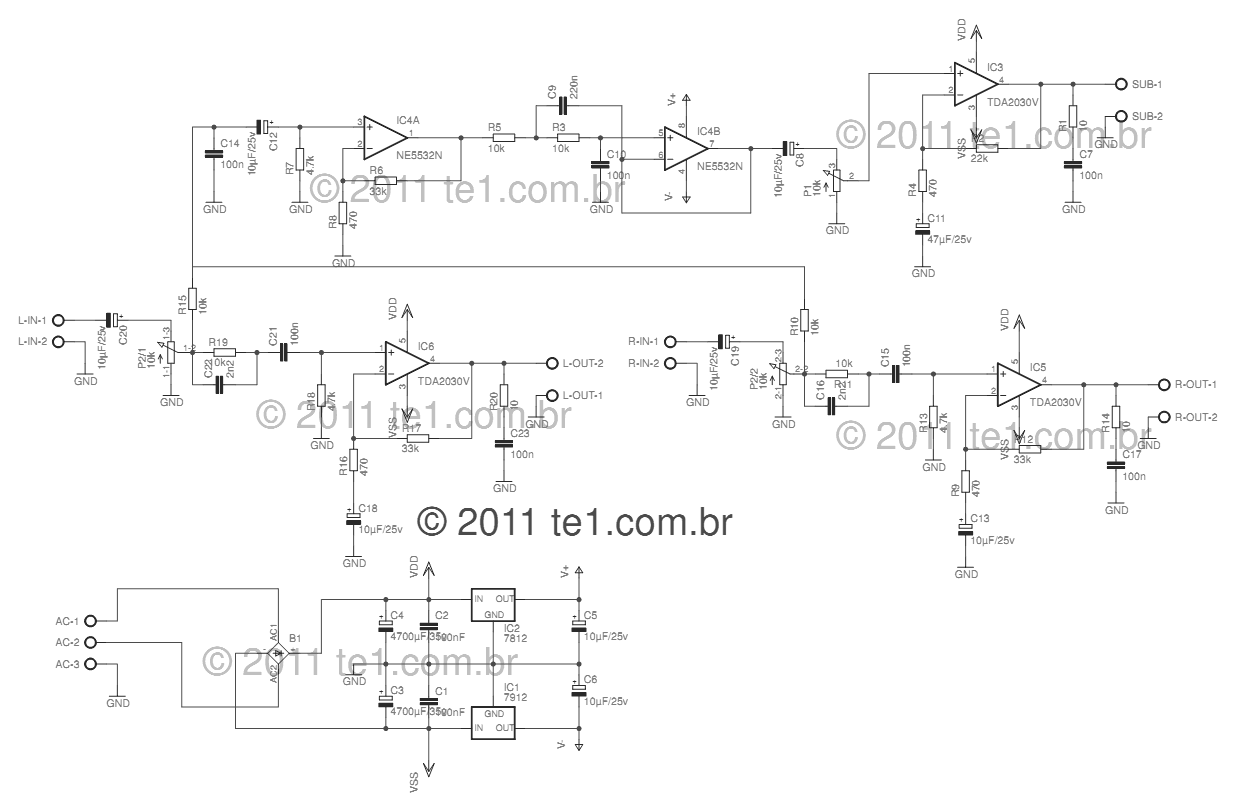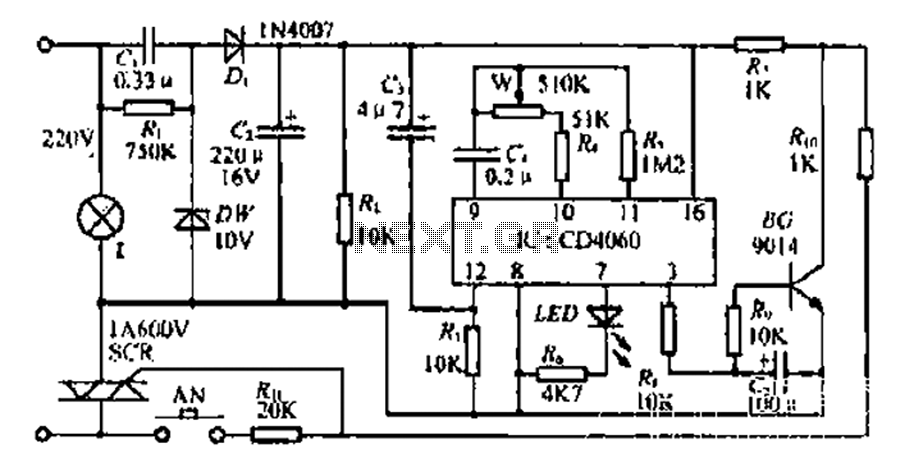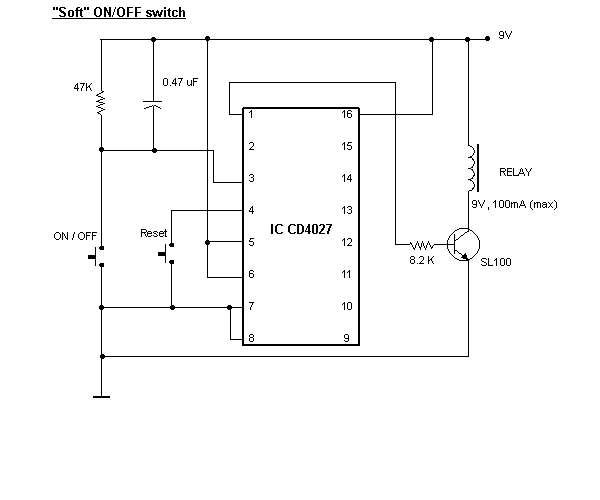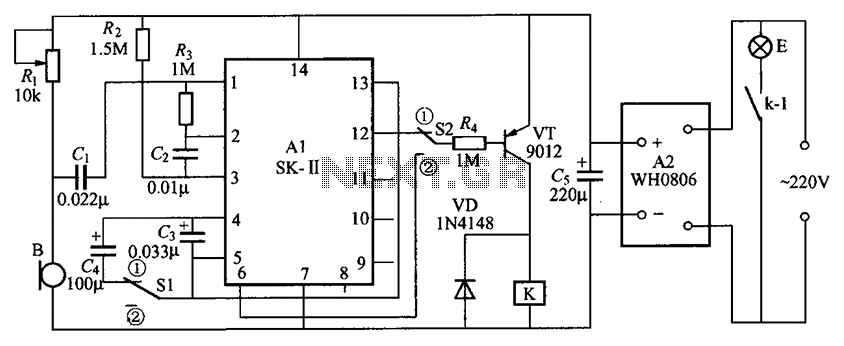
Intelligent Battery-Charging Circuit Circuit
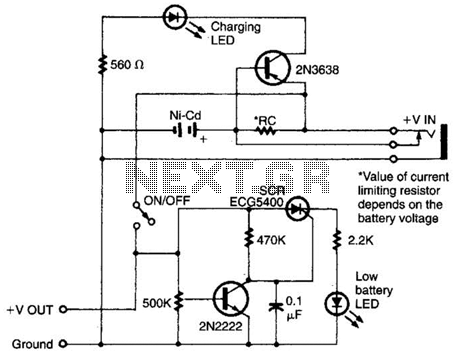
Intended for a NiCad application, this charging circuit can be used with a wide range of batteries. A low-battery detector is included, and the trip voltage is set via a 500 kΩ potentiometer. Select the resistor for the battery you intend to use.
The described charging circuit is specifically designed for Nickel Cadmium (NiCad) batteries, but its versatility allows it to accommodate various battery types. This circuit includes a low-battery detection feature, which is crucial for preventing over-discharge and extending battery life. The detection mechanism is adjustable, allowing for customization of the trip voltage through a 500 kΩ potentiometer. This means that the user can set the voltage level at which the circuit will trigger the low-battery alert, ensuring that the batteries are not depleted beyond their safe operating limits.
The selection of the resistor (Rc) is an important aspect of the design, as it directly affects the charging characteristics of the circuit. The appropriate resistor value should be chosen based on the specific battery chemistry and capacity being used. This selection process ensures that the charging current is optimized for the selected battery, enabling efficient and safe charging.
The schematic for this circuit should include the power supply input, the charging path with the selected resistor, the potentiometer for setting the trip voltage, and the low-battery detection circuitry. The low-battery detector typically consists of a comparator or a similar device that monitors the voltage across the battery. When the voltage drops below the predetermined threshold set by the potentiometer, the circuit can activate an alarm or indicator, alerting the user to the low battery condition.
In summary, this charging circuit is a robust solution for NiCad batteries, featuring adjustable trip voltage and customizable charging parameters, ensuring optimal performance and longevity of the battery pack. Proper implementation and component selection are critical for achieving the desired functionality and reliability of the circuit. Intended for a Nicad application this charging circuit can be used with a wide range of batteries. A low-battery detector is intended. The trip voltage is set via the 500-kQ pot. Select Rc for the battery you intend to use.
The described charging circuit is specifically designed for Nickel Cadmium (NiCad) batteries, but its versatility allows it to accommodate various battery types. This circuit includes a low-battery detection feature, which is crucial for preventing over-discharge and extending battery life. The detection mechanism is adjustable, allowing for customization of the trip voltage through a 500 kΩ potentiometer. This means that the user can set the voltage level at which the circuit will trigger the low-battery alert, ensuring that the batteries are not depleted beyond their safe operating limits.
The selection of the resistor (Rc) is an important aspect of the design, as it directly affects the charging characteristics of the circuit. The appropriate resistor value should be chosen based on the specific battery chemistry and capacity being used. This selection process ensures that the charging current is optimized for the selected battery, enabling efficient and safe charging.
The schematic for this circuit should include the power supply input, the charging path with the selected resistor, the potentiometer for setting the trip voltage, and the low-battery detection circuitry. The low-battery detector typically consists of a comparator or a similar device that monitors the voltage across the battery. When the voltage drops below the predetermined threshold set by the potentiometer, the circuit can activate an alarm or indicator, alerting the user to the low battery condition.
In summary, this charging circuit is a robust solution for NiCad batteries, featuring adjustable trip voltage and customizable charging parameters, ensuring optimal performance and longevity of the battery pack. Proper implementation and component selection are critical for achieving the desired functionality and reliability of the circuit. Intended for a Nicad application this charging circuit can be used with a wide range of batteries. A low-battery detector is intended. The trip voltage is set via the 500-kQ pot. Select Rc for the battery you intend to use.

